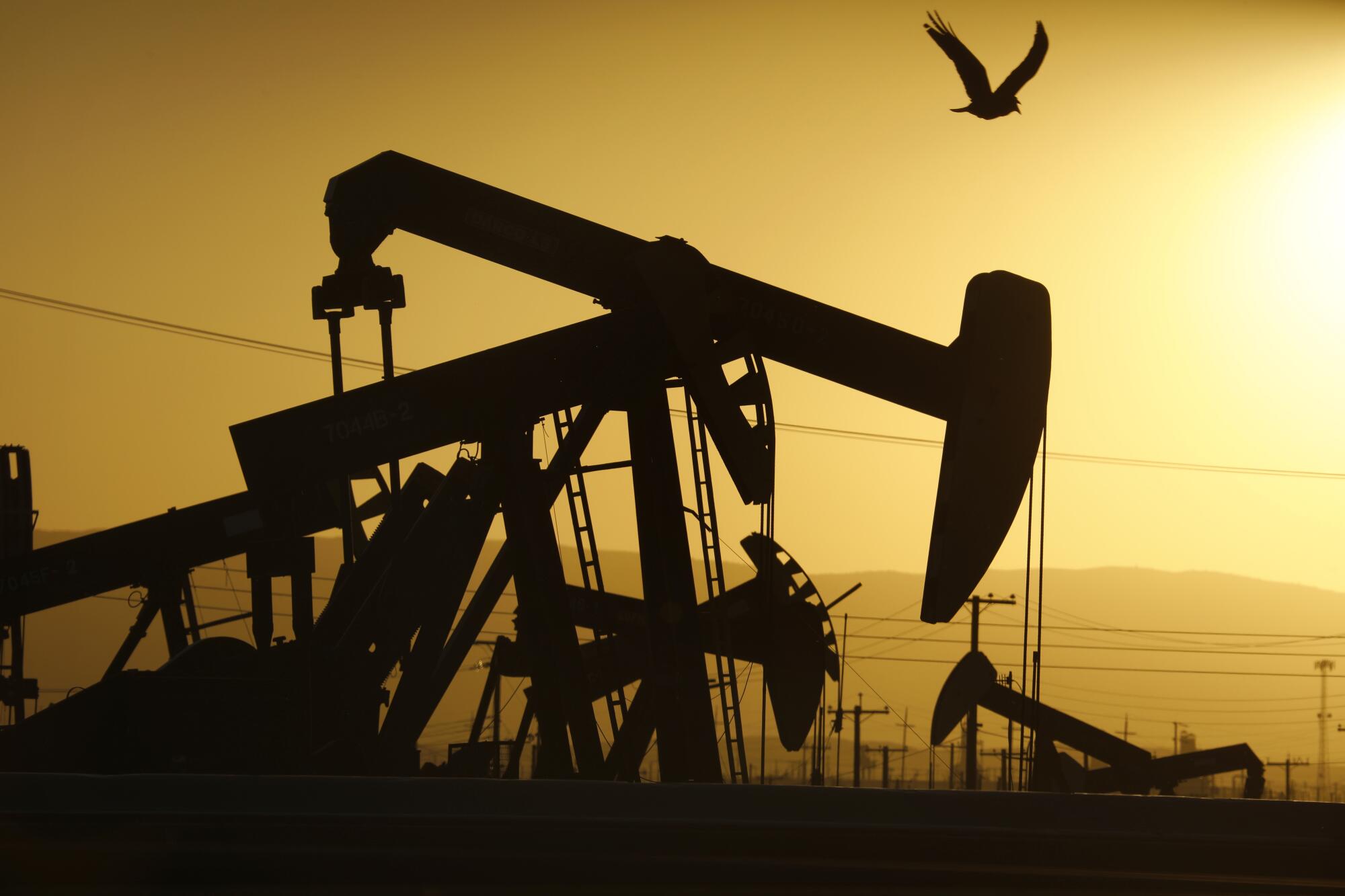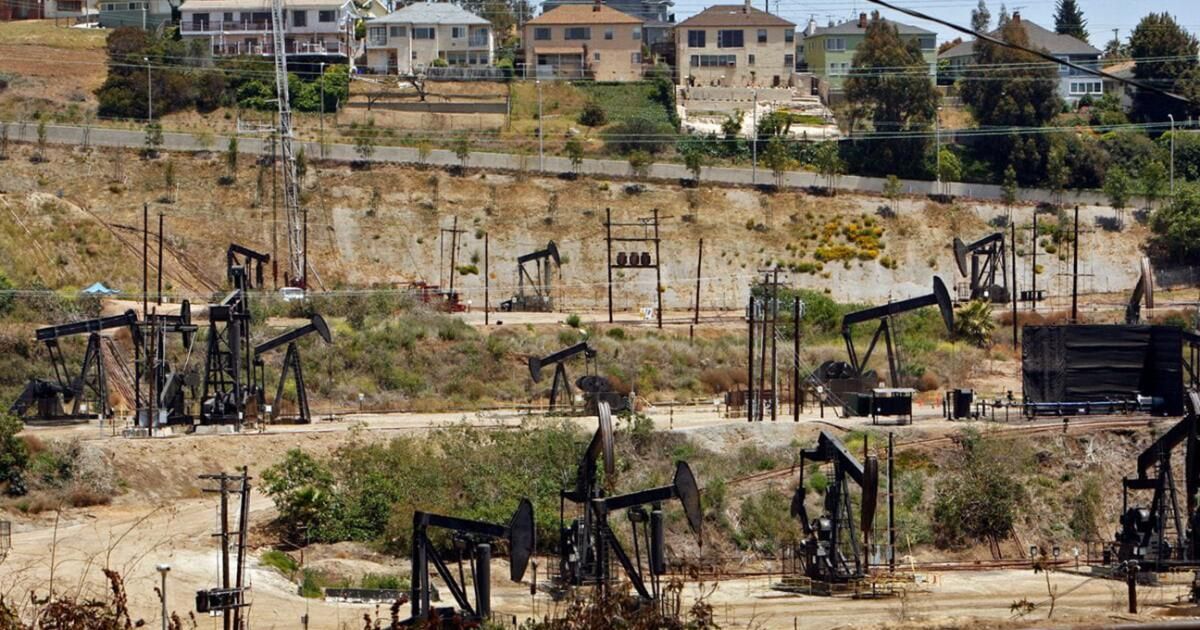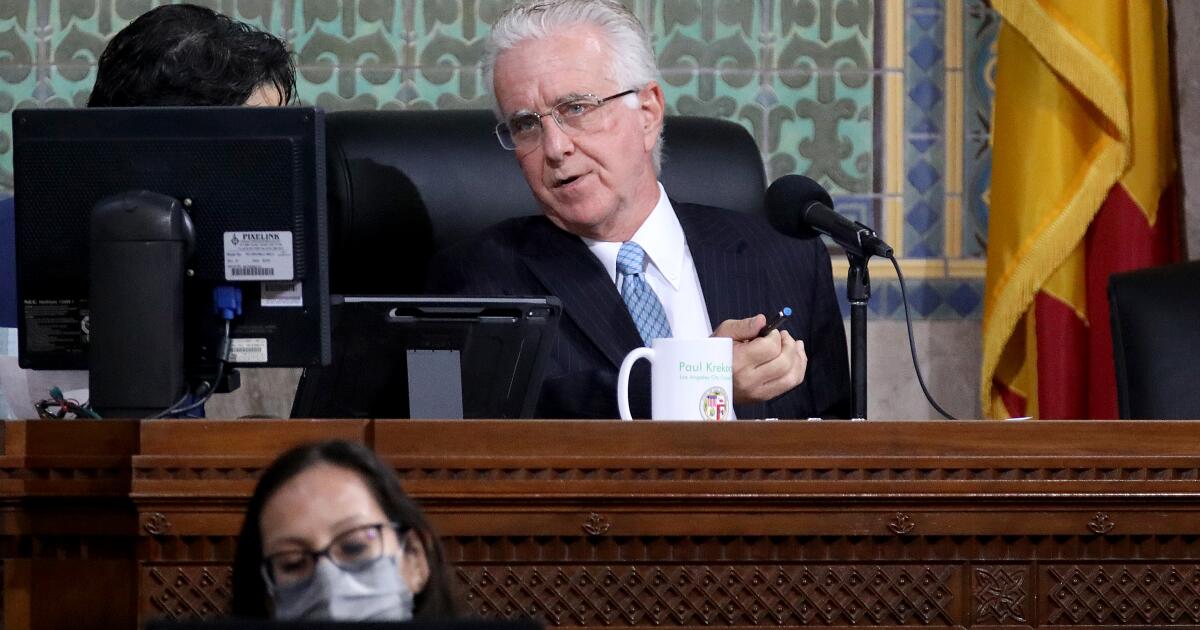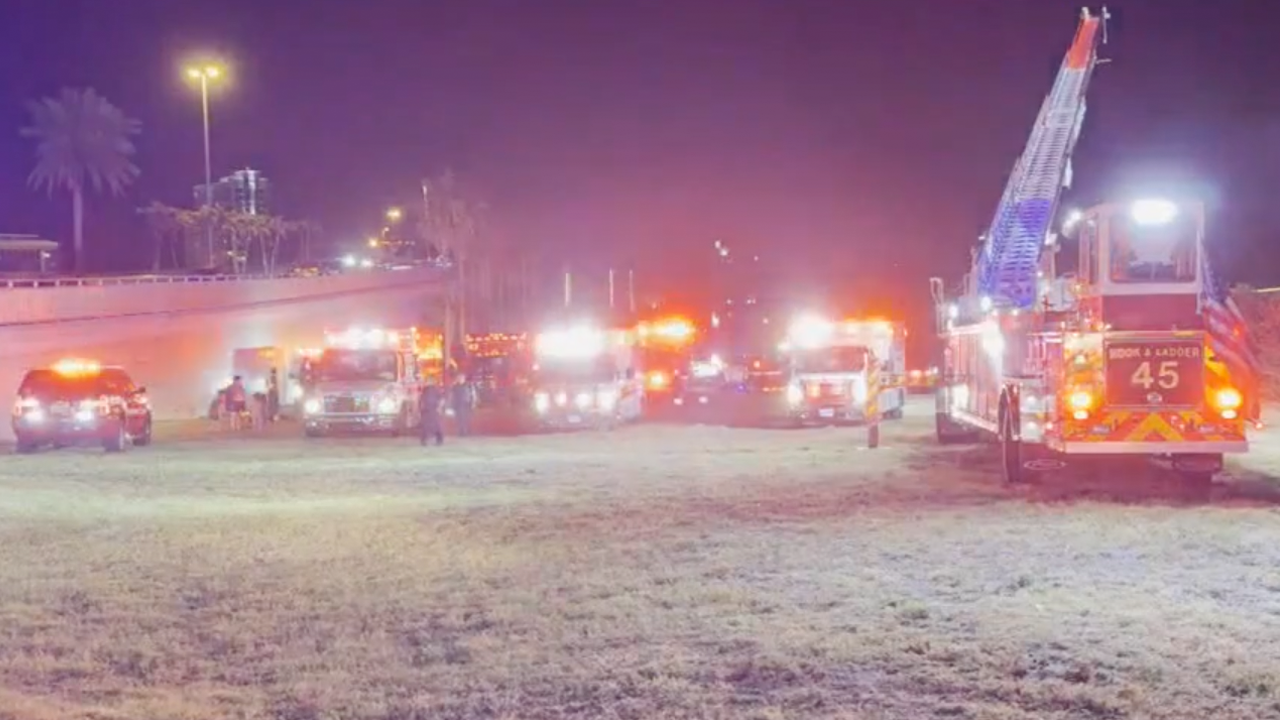As firefighters continue to battle more than two dozen active wildfires in California, new research has found that millions of people live near oil and gas wells that are in the potential path of the flames.
More than 100,000 wells in 19 states west of the Mississippi River are located in areas that have burned in recent decades and face a high risk of catching fire in the future, the vast majority in California, according to a study recently published in the journal One Earth.
What's more, nearly 3 million Americans live within 3,200 feet of these wells, putting them at increased risk of explosions, air and water pollution, infrastructure damage and other hazards.
“One of the things that surprised me was how many oil wells had been in areas that had been burned by wildfires in the past, and how big an impact that was having on the people of California, and is likely to continue to have in the next century,” said David J.X. Gonzalez, senior author of the study and an adjunct professor of environmental health sciences at UC Berkeley.
Aggressive and shocking reports on climate change, the environment, health and science.
California is particularly vulnerable to this threat. Of the roughly 118,000 oil wells in the West in high-risk fire zones, 103,878 of them (more than 87%) are in California, with 2.6 million residents living in close proximity to them, according to the study, which was described as the first to investigate the historical and projected threats from wildfires to oil and gas infrastructure in the United States.
Investigators examined active and inactive oil wells because some of them continue to leak methane and other harmful or combustible emissions, Gonzalez said. In California, the danger is especially high in Los Angeles, Fresno, Kern and Orange counties, which are high-risk fire zones and also home to large populations and numerous wells.

A pumping station sits idle near homes in Arvin, California, where toxic fumes from a nearby well sickened residents and forced evacuations in November 2019.
(Robert Gauthier/Los Angeles Times)
Many Angelenos have already experienced the dangers of living near oil and gas infrastructure. In 1985, methane linked to a long-abandoned oil field caused an explosion at a Ross Dress for Less store in Fairfax, injuring more than 20 people.
In 2015, a massive gas leak from the Aliso Canyon underground storage facility near Porter Ranch released about 100,000 tons of methane, ethane and other chemicals into the air, forcing more than 8,000 families to flee their homes and prompting reports of nausea, rashes, nosebleeds and other health problems.
Four years later, a 90-year-old well erupted beneath a construction site in Marina del Rey, spewing oil, gas and other debris into the air for several days.
And in 2017, the Thomas Fire scorched areas of Santa Barbara and Ventura counties containing more than 2,100 oil and gas wells, the long-term effects of which have yet to be studied.
But it's not just California that's at risk. Texas, Oklahoma and New Mexico also host wells in high-fire risk zones, the study found. The United States, overall, has been the world's leading producer of crude oil and natural gas since 2014, with most production concentrated in the West.
In addition, oil drilling continues across the country, despite federal and state efforts to curb the creation of new wells and plug old ones. One of the provisions included in President Biden's climate bill, the Inflation Reduction Act, allows new oil leasing contracts will be auctioned off on federally managed land, meaning California and other states could see more new wells in the future.
But the California Department of Geological and Energy Management, which oversees oil and gas wells in the state, said production here has been steadily declining since its peak in 1985.
“CalGEM currently approves far more operator permit applications to plug oil wells than to drill new wells,” agency spokeswoman Janice Mackey said in an email. She noted that over the past 12 months, the state agency approved 5,059 permits to permanently plug oil and gas wells, while approving just 56 new wells.
Mackey said the majority of the nearly 250,000 wells under the state agency's jurisdiction are in the San Joaquin Valley, “but there are also many others in high-risk fire areas such as Santa Barbara, Ventura and Los Angeles counties.”
This could prove to be a problem as wildfire activity continues to worsen, even as oil production slows. A recent study found that areas burned by wildfires in California could Increase 50% or more by mid-centurylargely due to climate change. Eighteen of The 20 largest wildfires in the state They have occurred since 2000.
Additionally, Mackey said the location of new wells, which is determined by oil and gas operators seeking permits from local governments, has little to do with fire risk.
“California's oil fields have been well established for decades. [over a] “It’s a century old,” he said. “Operators continue to drill in areas where oil and gas are known to exist.”
Estimates included in the study indicate that hazards will worsen in coming decades as population and wildfire activity increase. Between 1984 and 2019, researchers documented a fivefold increase in the number of wells located in wildfire-burned areas and a doubling of the population living within 3,200 feet of those wells.
By mid-century, there are expected to be more than 122,000 wells in high-risk wildfire areas, and by the end of the century that number will rise to more than 205,000, according to the study. Both projections are significantly higher if moderate-risk wildfire areas are also taken into account, and both show that California will continue to see the brunt of fires.
“Wildfires have been burning more and more in oil fields over the past four decades, and it’s a trend that will likely continue for the rest of the century, including near some densely populated parts of California,” Gonzalez said.

A 2020 photo shows one of more than 1,100 producing oil wells in the McKittrick Oil Field, just north of McKittrick, California, on State Route 33.
(Carolyn Cole/Los Angeles Times)
He added that estimates of the number of wells and people at risk are likely conservative because the study evaluated wells drilled before 2020. That year was California’s most dangerous year. The worst year of forest fires on recordand saw more than 4.3 million acres burn.
Researchers also found that exposure to oil wells in the path of the wildfires was unequally distributed, with Black, Latino and Native American people facing a disproportionate risk.
The reasons for this are multiple, according to González.
First, an estimated 350,000 new homes are built each year in the wildland-urban interface, or the area where human development meets forests and other natural landscapes. These areas often attract people seeking lower living costs, but they face significant risks of wildfires due to their remoteness and high vegetation content.
In urban areas, research has found that oil wells are more likely to be Located in neighborhoods that have historically been marginalizedor racially segregated. In addition, new wells are disproportionately drilled in areas where Black and Latino people live.
However, there are solutions, or at least recommendations to help mitigate the risks of oil wells in populated and wildfire-prone regions. California recently passed a law banning the construction of new oil and gas wells within 3,200 feet of homes, schools, health care facilities and other sensitive sites.
The state will also receive more than $35 million in federal funding to help plug and remediate more than 200 high-risk orphan oil and gas wells, and plans to invest more than a quarter-billion state and federal dollars in orphan well capping over the next several years.
The researchers also recommended limiting or eliminating drilling in high-risk wildfire areas and investing in better technology to monitor wells for leaks of flammable gases.
“There is a strong evidence base that active wells are harmful to people living nearby, even in the absence of wildfires,” Gonzalez said. “So I think from a public health perspective, additional protections are warranted.”
Mackey, of the California Department of Geological Energy Management, said oil and gas operators in the state are subject to multiple layers of regulation, including requirements that well pads and tanks be kept clear of vegetation and that wells within specific distances from homes and public rights-of-way have fire prevention devices, sensors and alarm systems.
“In the event of a fire, CalGEM will contact operators of affected fields to warn them of the potential risk and discuss strategies to prevent damage to wells and equipment,” he said. “Operators are instructed to shut down pipelines and tanks and to shut off power to wells if they are not already doing so. Operators also have firefighting capabilities that they deploy during emergencies.”
During the Thomas Fire, which was the largest in California at the time, operators in Santa Barbara and Ventura counties shut down their wells, pipelines and drilling jobs as part of their emergency response to mitigate the risk of fire-related incidents, he said.
Despite these efforts, the study also highlighted what it called a “pernicious feedback loop.” Fossil fuel production and consumption are driving global warming, which in turn increases the frequency and intensity of wildfires, it says. Greenhouse gases emitted by fires are also exacerbating climate change and contributing to the cycle.
Gonzalez said he hopes the study will prompt further action not only to reduce wildfires, but also to better protect people who live on or near oil wells in their driveways.
“We now have the opportunity to take steps to prevent future disasters,” he said.
Newsletter
Towards a more sustainable California
Receive Boiling Point, our newsletter exploring climate change, energy and the environment, and be part of the conversation – and the solution.
You may occasionally receive promotional content from the Los Angeles Times.












